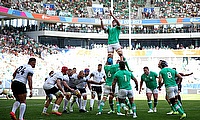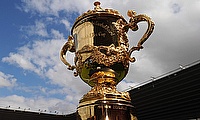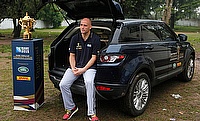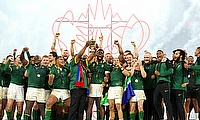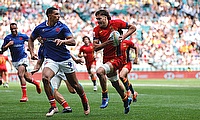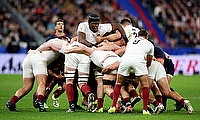The secret to Argentina's success

Examining the important roles in Argentina's success
©PA
The driving forces behind the Pumas' global ascent.
A SEAT AT THE TOP TABLE
Six Nations bosses took all of 30 seconds in a meeting with former Pumas scrum-half Agustin Pichot to dismiss out of hand the idea of Argentina joining the northern hemisphere's top Test contest. The rugby world fell over itself to call for help to cement Argentina's progress after finishing third at the 2007 World Cup in France, but the powers-that-be in the north were paying little more than lip-service. Their southern counterparts proved far more accommodating in the long-run, and so the Pumas hopped aboard the newly-formed Rugby Championship in 2012. The Tri Nations bosses welcomed Argentina into the competition already comprising Australia, New Zealand and South Africa. Regular exposure to the globe's best has kicked Argentina through the levels once again, with the fruits of that work on show at this year's World Cup.
GRAHAM HENRY
The New Zealand coach left his All Blacks post after the 2011 World Cup triumph, then shortly assumed a consultancy role with the Pumas. The decorated and shrewd boss could have had his pick of pension-fund prestige roles - instead he genuinely opted to give something back to the game. Henry told Argentina that to succeed in the Rugby Championship they had to do more than just produce a big, nasty scrum, boot the ball long and drive around the corner. The All Blacks stalwart told the Pumas to build a new attack, shaped around their own identity and traditional Argentinian personalities. While the Pumas had always been able to trust their tight play, never before had they opened up their ambitions into the wide channels. Pairing that pack platform with free-running attack has done wonders for Argentina's threats.
NO-FEAR RUGBY
Head coach Daniel Hourcade had every listener misty-eyed for rugby's golden days of yore when outlining Argentina's fearless ambition following their full-throttle quarter-final victory over Ireland. "We play with our hearts in our hands," said Hourcade, when asked how Argentina can attack with such abandon. Why let fear hold you back when you can master that impostor, control your mindset and seize the opportunities as they arise? So refreshing is the Pumas' new mantra that as a result there seems a level of relaxed focus around the squad. Their doors are open almost to all-comers in midweek, the players calmly discussing their plans and strategies. It is not quite nothing-to-lose, but it is almost as dangerous.
THE "BAJADA"
Dr Francisco Ocampo pioneered the unorthodox scrum technique back in the 1960s in Argentina. His twin loves of physics and scrummaging combined to devastating effect to create the "Bajada", Argentina's classic set-piece counter-drive. The locks bind round the props' hips with their outside arms, rather than through the legs as standard. Pinning the props inwards towards the hooker, all the power shoots through the centre of the front-row. Ireland's Rory Best felt the full force of Argentina's devastating tactic in Sunday's comprehensive quarter-final defeat, the Pumas taking control of the scrum.
RESTORING "EL MAGO" TO INSIDE CENTRE
Juan Martin Hernandez has waltzed through opposition backlines for more than 10 years, as often from fly-half as centre. Such a commanding presence, it is easy to understand why coaches want him as their top midfield general. But the accuracy and tenacity of Nicolas Sanchez at 10 has allowed Argentina boss Hourcade to shift "El Mago" Hernandez - "the magician" - back out to the centres. Hernandez shut down Ireland's power-runner Robbie Henshaw at every turn with fulsome defence at the Millennium Stadium last weekend, but also offered an extra creative outlet on the front foot.


